The 1990s were a different time in Hollywood, and it’s worth wondering how one of the most controversial movies ever made became both a box office hit and cultural touchstone. Indeed, the lurid American crime spree depicted in Oliver Stone’s Natural Born Killers has remained a haunting fever dream lodged firmly in the collective consciousness over the past three decades despite public outcries and attempts to ban the film. The themes of Americans’ obsession with violence as magnified through mass media have only gotten more topical since the movie’s release, but the production itself was grueling and the movie elicited major post-release outrage.
Let’s get all riled up and find out WTF Happened to this Movie!
Natural Born Killers came from a screenplay written by Quentin Tarantino, with a story focusing on a man and woman who get married and go on a cross-country killing spree. Tarantino had hoped to direct it himself for $500,000, although his screenplay also named his Video Archives coworker Rand Vossler as director. The pair failed to secure funding and attempted to make it themselves, shooting guerrilla-style with 16mm black-and-white film and no legal permits. Once that attempt failed, Tarantino sold the screenplay to producers Don Murphy and Jane Hamish for a meager $10,000. Vossler reportedly threw a fit and threatened legal action, but ultimately retained a co-producer credit despite having no involvement in making the final film.
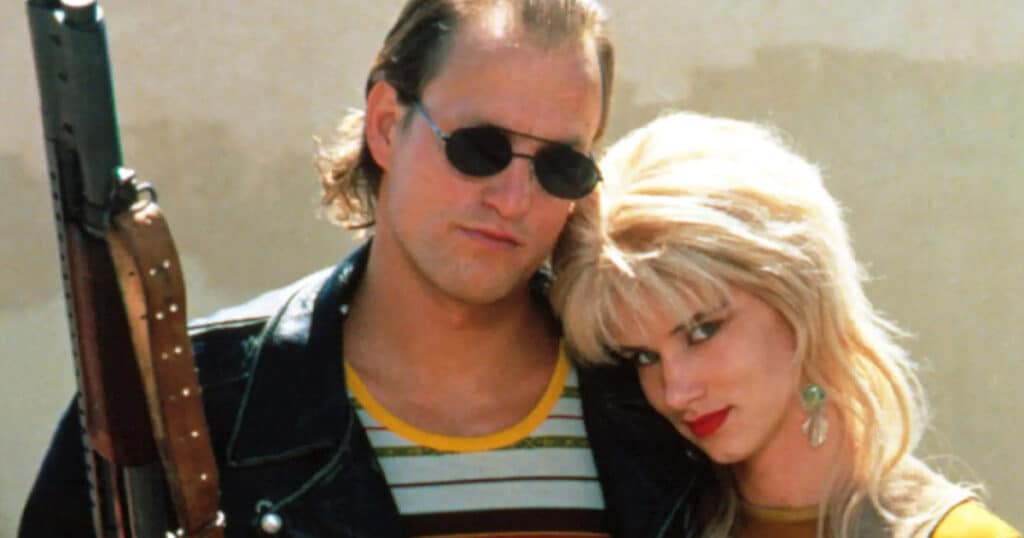
Once the producers set up the project at Warner Bros., Oliver Stone caught wind and immediately became interested in the script. Stone had experienced severe hardships and exhaustion during his previous film, Heaven & Earth, which was also a box office flop, and he vowed to make a much more straightforward, commercially appealing, and exhilarating movie.
The main characters in Natural Born Killers – Mickey and Mallory Knox – are said to be based on Charles Starkweather and Caril Fugate, a notorious young Nebraska couple who went on a killing spree throughout the mid-west in 1958; this same couple inspired Terrence Malick’s Badlands. However, once Stone retooled the script, he attempted to parallel the story more with Bonnie & Clyde, one of his favorite movies growing up.
Along with first-time scribe David Veloz and associate producer Richard Rutowski, Stone rewrote the screenplay so substantially that Tarantino was given story credit only, another slight that widened the rift between Tarantino and Stone as the production went on. Stone kept some of Tarantino’s electric dialog but shifted the narrative focus away from true crime journalist Wayne Gayle, instead putting the spotlight directly on Mickey and Mallory as the main characters and exploring their sordid history.
Ironically, when Stone first got hold of the script, his idea was to make a double-barrel action picture, or as the director said, “something Arnold Schwarzenegger would be proud of.” However, as Stone began developing the project, he would look at contemporary media stories like the O.J. Simpson trial, the Menendez brothers murders, skater Tanya Harding’s assault on Nancy Kerrigan, and the infamous Rodney King beating – all sensationalized by news outlets to gain higher ratings. He would use this as ammunition to make a larger social commentary about the seductive spectacle of crime and the implicit role media plays in amplifying the American obsession with criminals and killers.
With his satirical crosshairs targeting the media itself, Stone changed the direction from a typical action movie to a “vicious, coldhearted farce” about the media. He also drew inspiration from his own dissolving marriage and injected his personal anger and sadness into the violent nature of the movie.
When it came time for casting, Michael Madsen was first considered for the role of Mickey Knox, who was named after the writer who translated American dialog in the Tarantino favorite The Good, The Bad, and The Ugly. When the studio wanted a softer, less intimidating persona, Stone set his sights on actor Woody Harrelson, who was still primarily known at the time for his goofy bartender on Cheers. Stone was interested in casting him against type, and also said “there’s something about Woody that evokes Kentucky or white trash.” Harrelson later noted that Stone cast him because he had “the look of violence in his eyes.” It’s unclear whether Stone also considered Harrelson because his father, Charles Harrelson, was a hitman who assassinated the first federal judge in the 20th century.
Believe it or not, Stone offered singer/songwriter Tori Amos the role of Mallory. According to her biography, Amos was interested until Stone explained that he wanted to use her song “Me and a Gun” for a scene where Mallory kills someone. Because the song was based on Amos’ own traumatic real-life rape, she allegedly slapped Stone in the face and summarily declined the role.
Instead, Stone cast Juliette Lewis for similar reasons to Harrelson – eyes of malice and an aptitude for playing white trash. As Stone said of his two leads, “They didn’t feel like upper-class people.” Although Stone encouraged Lewis to exercise and gain muscle mass, Lewis insisted that Mallory should resemble more of a “pushover”, which would make her capacity for violence that much more disturbing. Still, Lewis agreed to kickboxing training to ensure her fight scenes looked convincing.
While Harrelson and Lewis were cast without much compromise, the same can’t be said of the supporting players. For instance, John Cusack was offered the role of Wayne Gayle, but turned it down. Tim Roth and Steven Buscemi were both offered the role, but supposedly Tarantino threatened to never work with them again if they accepted.
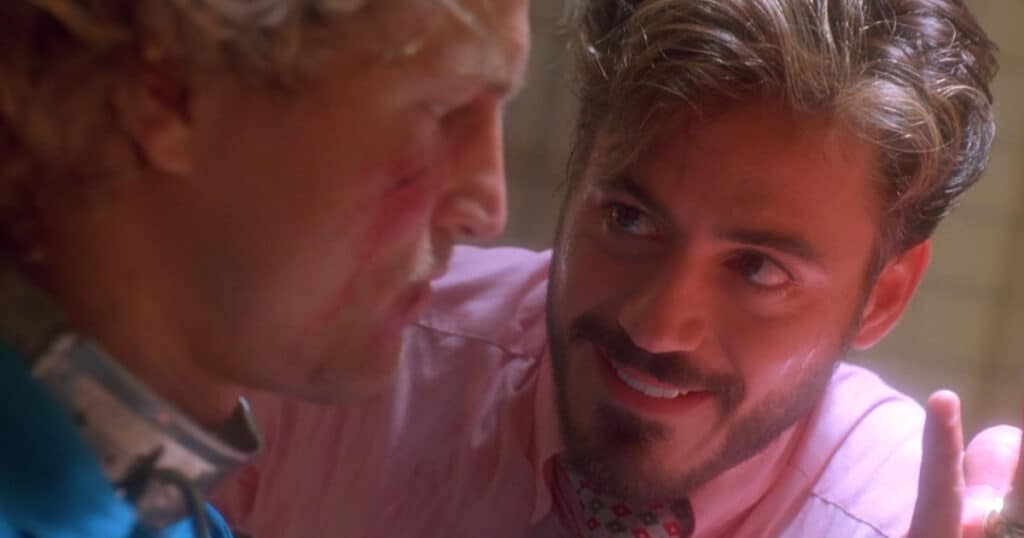
When Robert Downey Jr. was cast as Wayne Gayle, he researched the part by spending time with Steve Dunleavy, an Australian TV host known for popularizing shocking and sensationalistic crime sprees. After his experiences with Dunleavy, Downey convinced Stone to let him play the part with an Australian accent.
Screen veteran Jack Palance was offered the part of prison Warden Dwight McClusky but declined due to the extreme violence in the script. The part instead went to Tommy Lee Jones, who had just worked with Stone in Heaven & Earth. Jones partially attributed his over-the-top performance to Moliere’s satirical social climber play “Le Bourgeois Gentilhomme”.
Gary Oldman, James Woods, and Chris Penn were considered for unhinged detective Jack Scagnetti. According to the late Tom Sizemore (who was partnered with Penn in True Romance, based on another Tarantino script), he won the part by performing a monologue for Stone in a bar parking lot. Sizemore might’ve got a bit more than he bargained for – In the scene where Mallory smashes Scagnetti’s face into a cement wall, Juliette Lewis genuinely broke the actor’s nose.
Perhaps most controversial was the casting of Rodney Dangerfield as Mallory’s abusive father. Primarily known for stand-up comedy, Dangerfield did not understand what Stone was trying to achieve by shooting a father sexually abusing his daughter in the visual aesthetic of an old sitcom. Dangerfield had great difficulty performing his part during filming, so to address his concerns, Stone allowed him to rewrite the character’s dialogue, including the profanity-laced tirades. Although that didn’t solve everything — Dangerfield was apparently so disturbed by the material that he refused to perform a scene groping Mallory’s buttocks, and two stunt doubles were used instead. Despite his apprehension, Dangerfield would earn praise for his only dramatic role, which made Oliver Stone proud that Dangerfield’s concerns were rewarded with critical appreciation once the film was released.
Natural Born Killers began filming in May 1993 with a production budget of $34 million. Principal photography took only 56 days, with much of the shoot taking place in New Mexico, while the prison scenes were filmed at the real-life Statesville Correctional Center in Joliet, Illinois – a maximum security facility where 80% of the inmates were jailed for violent crimes.
When filming the brutal riot inside Stateville, many of the extras were actual convicted murderers equipped with fake rubber weapons. But when the real inmates were put on lockdown, 200 more extras were required to continue. Between this authenticity and Stone reportedly playing tribal African music at full volume on set, the result was a heightened sense of chaos and panic among the cast and crew that played well into the ramped-up riot sequence.
Of course, one of the most notable aspects of Natural Born Killers is the frenzied visual style that Stone and cinematographer Robert Richardson were able to create. Stone was partly inspired by the climactic shootout in Bonnie & Clyde, which used innovative editing methods, multiple cameras and different frame rates. He wanted to integrate several visual components from popular TV shows and music videos as a way to critique the media as a whole. As Stone said:
To achieve this, they utilized color and black-and-white film stocks and everything from front and rear projection to 35mm, 16mm, Super 8, Hi8, and Beta, ultimately using a total of 18 different formats, along with Dutch angles, Cooke zoom lenses, and jarring camera tilts to establish the movie’s disorienting explosion of imagery.
But DP Robert Richardson, who had previously used multi-format techniques for his Oscar-winning cinematography on Stone’s JFK, had an absolute nightmare experience working on Natural Born Killers. Richardson not only hated the script from the beginning, but he only had 56 days to complete the demanding task of filming such a trippy and unique visual tableau. For Richardson, the script conjured painful memories of his past, with a lingering PTSD leading to insomnia and an over-dependence on sleeping pills during filming. Over the course of the production, Richardson also broke his finger filming the POV shot of Mallory sprinting into wire mesh, found his marriage on shaky ground, and dealt with his brother falling into a coma. While Richardson distanced himself from the film once his work was completed, he admitted that those hardships actually gave him a creative energy necessary for finishing the job. Perhaps most ironically, Richardson has gone on to become Quentin Tarantino’s longtime cinematographer after both roundly rebuked Natural Born Killers.
Stone made these aesthetic choices as a way to underscore the themes of violence in media and the trend of exploitative tabloid TV journalism in the 90s. The director refers to the frequent transitions from color to black-and-white footage using repeated lines of dialog as “Vertical Cutting,” to create an objective “outer moment” juxtaposed with the subjective black-and-white inner moment of character’s emotions. For example, in the diner scene when the waitress takes Mickey’s pie order, the color version depicts her natural thoughts as the “outer moment” while her flirtatious nature in black-and-white is meant to represent Mickey’s “inner moment.” Similarly, when the redneck calls Mallory “pussy” in the colorized “outer moment,” a quick flash cut to Mickey covered in blood represents his own wrathful “inner moment.”
Part of the multimedia blend included Stone’s scathing criticism of TV commercials, which was meant to emphasize how emotionally soothing American TV advertisements were in relation to horrific events. To represent the trend of comforting TV commercials airing after tragic real-life news, Stone timed every commercial in the film to come directly after a violent incident or demonic appearance. To this end, Stone made use of two iconic Coca-Cola polar bear ads from the 1990s. According to Stone, the beverage corporation granted permission to use the brand as product placement despite knowing the movie’s subject matter, but when the company executives saw the film, they were outraged by Stone’s subversion of the ad.
Stone also took aim at how other significant current events had been presented to audiences. The scene in which Wayne Gayle interviews Mickey Knox in prison was modeled after Geraldo Rivera’s interview with Charles Manson and Mike Wallace’s interview with Panamanian dictator, Manuel Noriega. Mallory’s beatdown by police outside the pharmacy was meant to evoke the infamous Rodney King assault that had sparked public outcry and launched a debate about police brutality…a topic that’s only become more relevant in the 30 years since.
As for the movie’s mysterious shots featuring a headless man, Stone claimed that he got the idea from a dream, and said that the haunting visions represent Mickey’s father, who committed suicide by blowing his head off with a shotgun. These visions were meant to represent the psychic toll of Mickey’s scarred past — he cannot escape the cycle of violence passed down by his father.
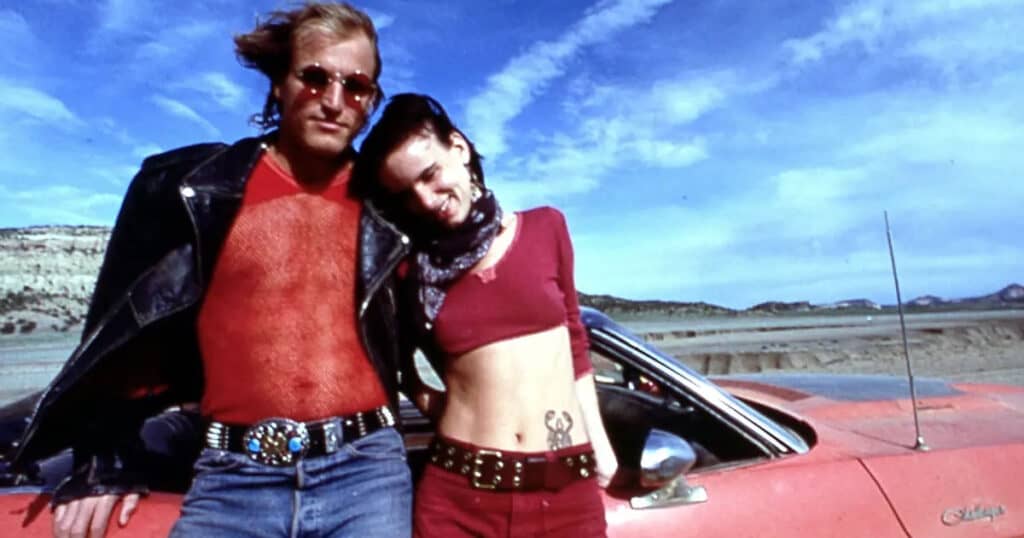
After principal photography on the movie wrapped in July 1993, it was followed by an additional 11 months of laborious editing to achieve the striking, surreal blend of psychedelic visual styles. Most feature-length films of the time contained around 600 or 700 editorial cuts, but Natural Born Killers featured nearly 3,000 cuts to accomplish the multimedia mashup Stone was aiming for.
When the studio submitted the film to the MPAA, Stone was informed he would have to reduce the carnage to avoid an NC-17 rating. Stone trimmed roughly 4 minutes of bloodshed to get an official R-rating, although the edits were reinserted into the 1996 Director’s Cut of the film, which also features a lengthy courtroom scene featuring Ashley Judd as one of Mickey and Mallory’s sorority house victims.
One scene that didn’t make the cut was an alternate ending in which Mickey and Mallory pick up Arliss Howard’s character Owen, the ghostly inmate who helps them escape from prison. In the alternate ending, Mallory pleads for her life before Owen shoots her and Mickey dead. While Stone admits the vanishing image of Owen in the opening diner scene foreshadows this version, the director ultimately opted for the ambiguous ending because movie bad guys in the 90s tended to get away with their crimes.
Natural Born Killers was officially released in North American theaters on August 26, 1994. Despite the swirling controversy, or because of it, the movie opened on top at the box office with $11.2 million before eventually earning more than $50 million domestic and $110 million worldwide.
The polarizing nature of the movie was reflected in the critical chasm among top reviewers at the time. Roger Ebert awarded the film 4/4 stars and listed it as the 8th best of 1994. By contrast, Rolling Stone’s Peter Travers labeled the film his #1 worst of the year.
Despite the cuts that had been made to decrease the disturbing violence, Natural Born Killers continued to face controversy and censorship. For instance, the movie was originally banned from theaters and cinema clubs in Ireland, and in the UK, the theatrical release was delayed for six months while the British Board of Film Classification (BBFC) investigated unsettling reports that the film was inspiring copycat crimes in France and the United States.
Although it eventually made it to U.K. theaters in February 1995, the home video release scheduled for March 1996 was also affected by real world events when a horrific school shooting in Scotland occurred that same week. As a result, Natural Born Killers was not released on home video there until July 2001, despite airing on television in 1997.
Natural Born Killers was also allegedly a favorite of several school shooters including the Columbine perpetrators, which further contributed to the movie’s notoriety and put Stone and Warner Bros. under fire for creating what was perceived as a socially irresponsible movie.
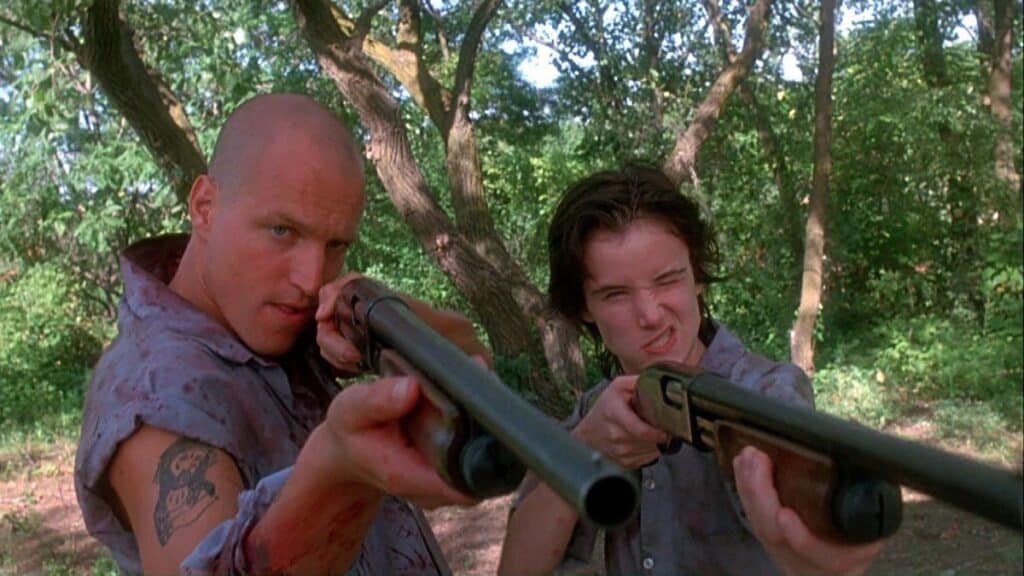
Additionally, in 1995, teen couple Sarah Edmondson and Benjamin Darras dropped acid and watched Natural Born Killers on a loop, followed by a multi-state crime spree in which a store clerk named Patsy Byers was shot and paralyzed and a man named William Savage was killed. With the help of Savage’s long-time friend, famous author John Grisham, Byers attempted to sue Oliver Stone and Warner Bros. on the basis that Natural Born Killers was inciting real-life violence.
The case was initially thrown out, with Stone and the studio granted protections under The First Amendment. However, in May 1998, the lower court decision was overturned by the Intermediate Louisana Court of Appeals and the case was retried. The next three years were a fraught time in Hollywood as the entire film industry awaited the outcome. But in the end, the Court of Appeals dismissed the lawsuit in a watershed decision demonstrating that fictional Hollywood movies were not culpable for inspiring real-life copycat crimes.
As we know, Quentin Tarantino publicly disowned Natural Born Killers during and after its release, and even demanded his name be removed from the credits altogether. When Warner Bros. legally barred Tarantino’s attempt to publish his original screenplay in paperback form, the filmmaker doubled down on his contempt, saying “I hated that f*cking movie. If you like my stuff, don’t watch that movie.”
As for Oliver Stone, he brushed off Tarantino’s public disapproval. Stone also has few regrets about the finished work, aside from Mickey using a joke as a means of escaping prison, and a character arc for Pruitt Taylor Vince’s prison guard that was left on the cutting room floor.
Since its release, Natural Born Killers has only maintained its reputation, with magazines like Entertainment Weekly and Premiere ranking it on lists of the Most Controversial and Most Dangerous movies ever made. Oliver Stone’s evisceration of the media and hallucinogenic tale of psychopaths cemented the movie’s lasting legacy as a polarizing picture whose resonant themes of sensationalized violence continue to be amplified nearly 30 years later.
Additional Sources:
https://www.theguardian.com/film/2010/jul/18/oliver-stone-chavez-wall-street
https://www.latimes.com/archives/la-xpm-1994-08-31-ca-33276-story.html
https://www.telegraph.co.uk/films/0/mayhem-murder-movies-making-natural-born-killers/


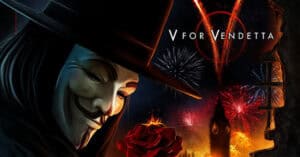
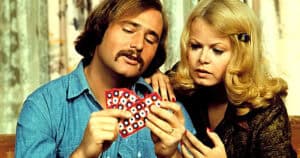
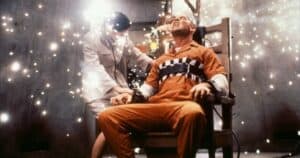
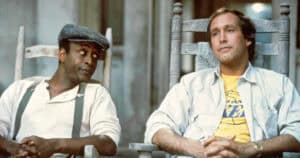
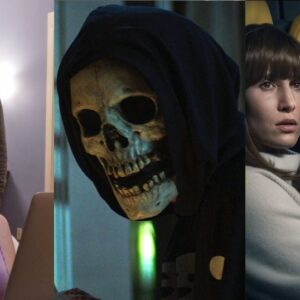
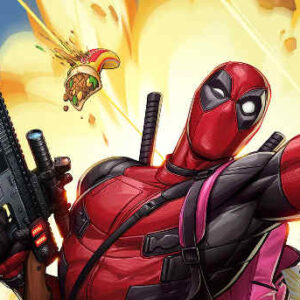

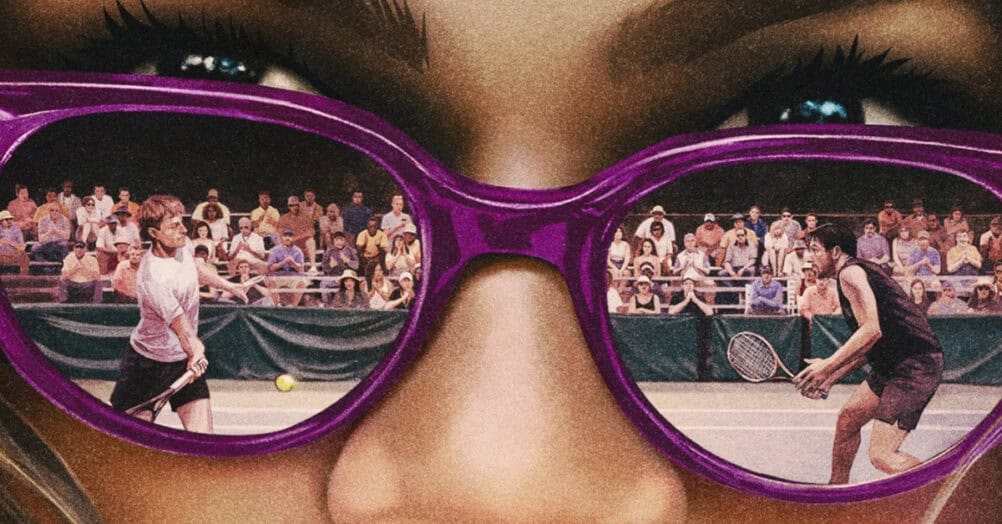
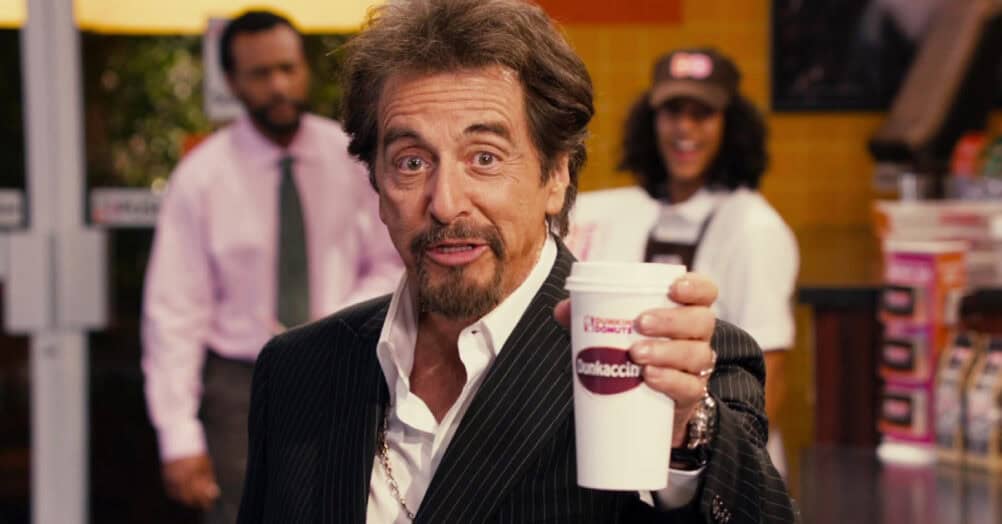
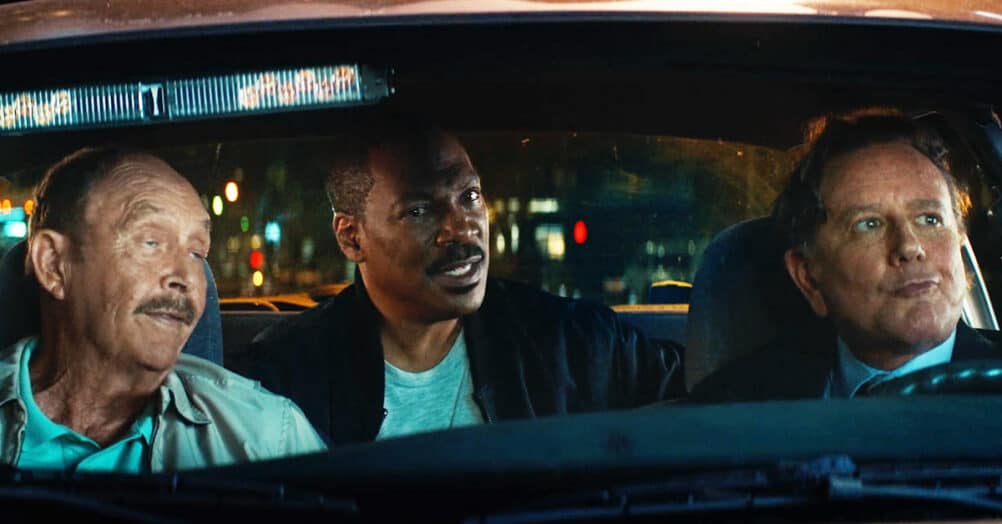
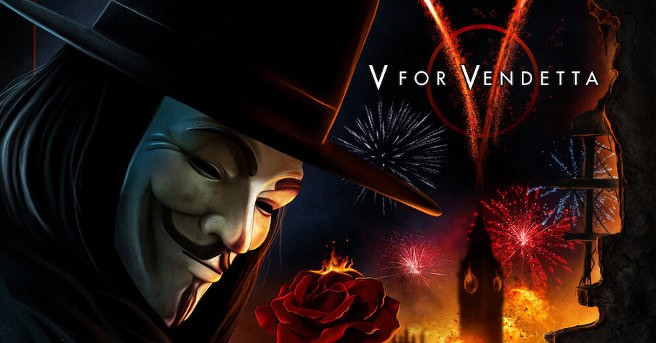
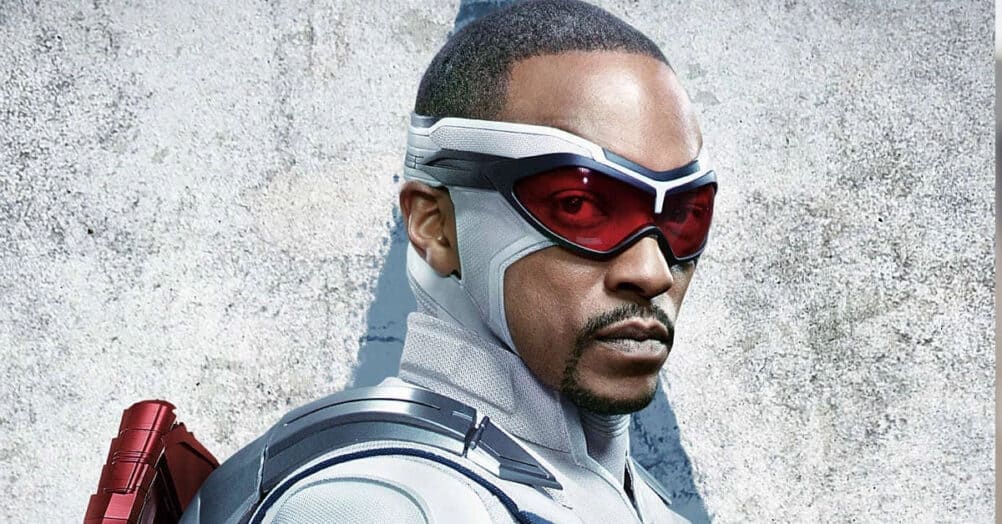
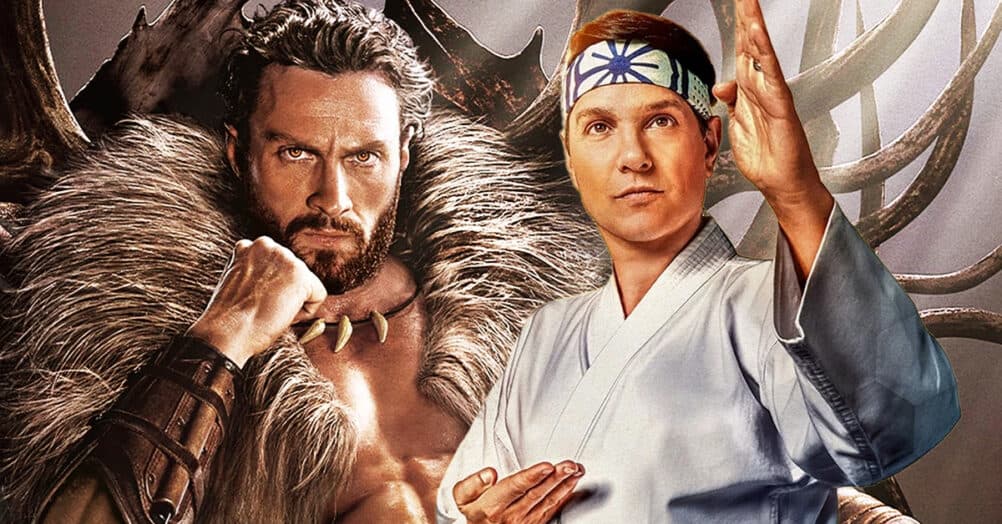

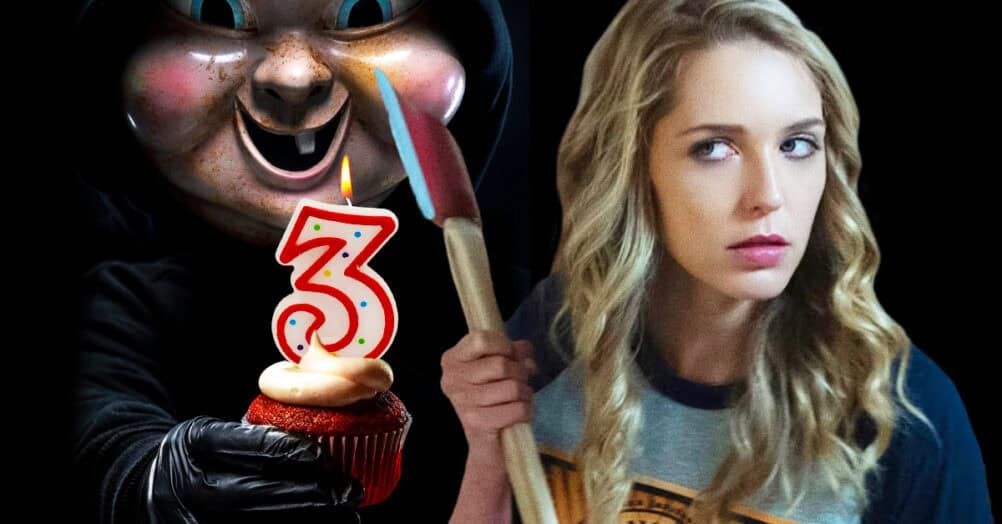
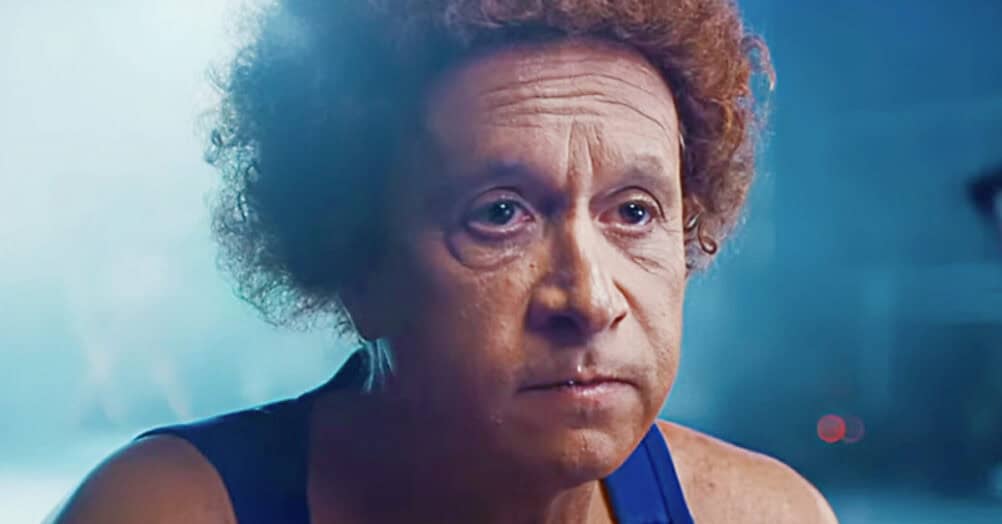
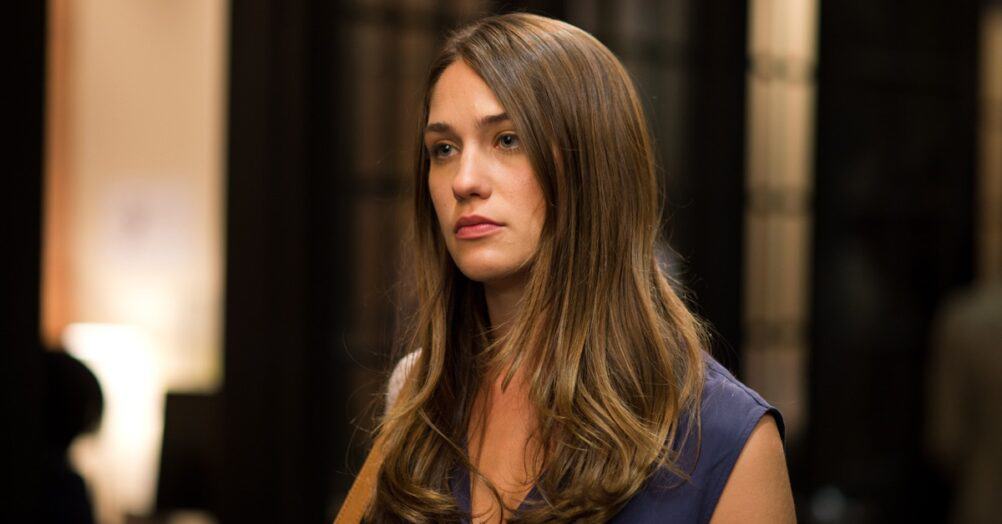
Follow the JOBLO MOVIE NETWORK
Follow us on YOUTUBE
Follow ARROW IN THE HEAD
Follow AITH on YOUTUBE